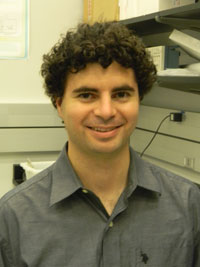Correlated nanoscale composition and optical property maps are important to engineer nanomaterials in applications ranging from photovoltaics to sensing and therapeutics. Light absorption in the visible and near-IR probes electronic transitions, providing information on the band gap and defects. Light absorption in mid-IR probes vibrational transitions and provides information on chemical composition. However, light diffraction limits the lateral resolution of conventional micro-spectroscopic techniques to approximately half the wavelength of light, which is insufficient to reveal nanoscale details. Additionally, such wavelength-dependent resolution impedes direct comparison of spectral maps from different spectral ranges.
Photo Thermal Induced Resonance (PTIR) is a novel, label-free technique that circumvents light diffraction by employing an AFM tip as a local detector to measure light absorption with a wavelength-independent resolution. The function of the passive AFM tip is to locally transduce the thermal expansion of the sample induced by light absorption into large cantilever oscillations. Our PTIR setup combines two AFM microscopes with four lasers providing wavelength-tunability from 400 nm to 16000 nm continuously. Local absorption spectra (electronic or vibrational) and maps are obtained recording the amplitude of the tip deflection as a function of wavelength and position, respectively.
The working principles of the PTIR technique, its lateral resolution, and linearity will be discussed first. Results show that the PTIR signal intensity is proportional to the local absorbed energy suggesting applicability of this technique for quantitative chemical analysis at nanoscale, at least for thin (< 1000 nm) samples. Additionally, a wavelength-independent resolution as high as 20 nm is demonstrated across the whole spectral range.
In the second part of the talk I show recent examples from my lab in which the PTIR technique provides insightful information to engineer nanomaterials for greatest efficacy. Examples will include PTIR characterization on: i) plasmonic nanomaterials ii) mixed-ligand Metal-Organic Frameworks single crystals iii) multi-crystalline tri-halide perovskites.”
Finally, I will discuss new approaches, developed at NIST, aimed to increase the sensitivity of the PTIR technique.
Speaker:
Institution:
Location:

